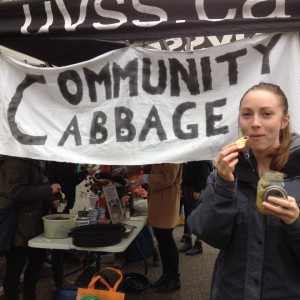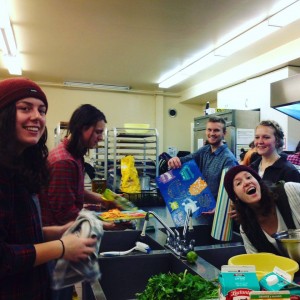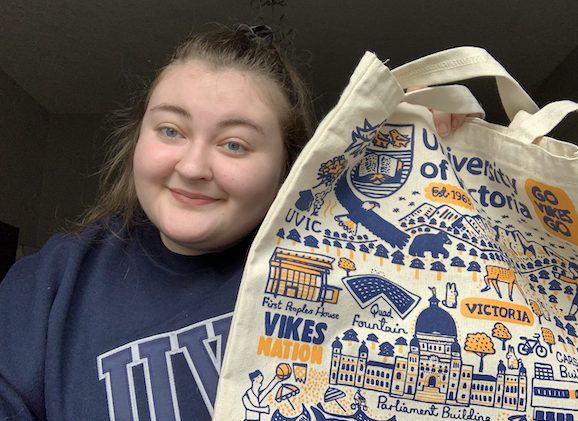7 Tips to Cut Down Food Waste
I’m just going to say it straight up: 40% of the food produced in Canada gets wasted.
This food can never experience what it was made for. It won’t feel the cheese slowly melting on top of it like a blanket or the cake growing in the oven, spreading its sweet smell. It doesn’t get the pleasure of being turned into a delicious meal to cheer up a kid, a grandparent, a student or anyone with its amazing taste. Why are we so cruel to our food? And where is it getting lost?
Unfortunately, the first place you have to look is in the mirror. 47% of wasted food gets lost in private households, where it is bought with good intentions then never used. To illustrate these amounts, the Vancouver-based documentary Just Eat It — A Food Waste Story draws the picture of a person going shopping, buying four full bags of groceries — and then dropping one on the way out, without even caring. This opulence just seems to be part of our Western culture and “normal,” so there is little done about it. However, there are enough reasons to take action:
There is a lot of money invested in this food. Not just when you pay for it at the store, but also through the resources the industry puts into its production, which get wasted as well.
Food waste plays a big role in environmental pollution. Water is used and carbon dioxide emitted during the process — 40% of the time for nothing but more pollution. For example, a lot of packaged food thrown out by grocery stores goes straight into the landfill and not the compost. This is problematic because landfill gets degraded without contact to air, so organic products can’t decompose in a natural way. Instead, it leads to the emission of methane, a gas 25x times worse for our environment than carbon dioxide.
Other people would be happy to have a meal. While one part of the population lets their groceries go bad in the fridge, others are staring at an empty plate. According to the CBC, 1 in 8 Canadian families regularly struggle to put food on the table.
So what can you, as a student, do to reduce food waste? Even though it might not be possible for you to change a whole industry, it is quite easy to make a contribution when you’re starting with your own household and some steps beyond:
1. Get involved on campus.  UVic has a club devoted to the issues of food waste and food security: The UVic Community Cabbage. We rescue food out of the waste stream and turn it into a lunch — for you. The meals we cook are served on campus and free for everyone. Keep an eye out for the Cabbage on Fridays in front of the McPherson library around 12:20 pm for as long as supplies last, which can be half an hour or two, so don’t miss it!
UVic has a club devoted to the issues of food waste and food security: The UVic Community Cabbage. We rescue food out of the waste stream and turn it into a lunch — for you. The meals we cook are served on campus and free for everyone. Keep an eye out for the Cabbage on Fridays in front of the McPherson library around 12:20 pm for as long as supplies last, which can be half an hour or two, so don’t miss it!
You can get even more involved by helping us cook the rescued food. We meet every Thursday between 5 and 7 pm at Emmanuel Baptist Church to have a good time, a lot of laughs and prepare food. This is perfect training for your cooking creativity, as we have different products and amounts every week to be turned into a simple-to-prepare-and-serve dish. We do all of this to raise awareness for food waste and to inspire students to cut down their contribution!
 2. Don’t be afraid to go dumpster diving. Another great amount of food is wasted by grocery stores. They throw a lot of food out because it’s one day past the best-before date, for example. This is nothing to be worried about. I mean, it says “best before” which indicates that it still is good after that.
2. Don’t be afraid to go dumpster diving. Another great amount of food is wasted by grocery stores. They throw a lot of food out because it’s one day past the best-before date, for example. This is nothing to be worried about. I mean, it says “best before” which indicates that it still is good after that.
Another reason is that the products don’t match the high aesthetics of today’s costumers. If an apple has a bruise, it is most likely not purchased, even though the little flaw doesn’t really change its taste.
However, I can understand if you’re a little bit unsure about this whole dumpster diving thing; I felt that, too, in the beginning. But the Community Cabbage has a solution for you! We offer an introduction into the art of dumpster diving and an overview of dumpster etiquette on the 2nd of February between 6 and 9 pm in Vertigo Lounge (Student Union Building).
During the workshop, there will also be the option to watch a documentary about food waste and, of course, food. It’s a potluck, so get out your cooking creativity and bring a bowl of deliciousness! You can find the Facebook event here.
3. Plan your meals. Try to avoid going to the grocery store hungry, just buying what you see and feel like eating in that moment. This might not play out that well in the end and leave certain products going bad untouched.
Rather, think first what you still have in your fridge and how you can make a meal out of it, so you only have to buy the missing things. This strategy automatically gets easier when you regularly go for smaller shopping trips, instead of a big one once a month.
4. Structure your fridge. I’m not talking about a complicated structure here, simply one that helps you keep an overview of what you have and what needs to be eaten. Maybe make a certain part the “eat this first” section so you know what to include in your next meal planning.
5. Get creative. Your taste is the limit, not the cookbook. Look at your “eat this first” section and what your fridge and shelves have to offer. Do you really need to go to the supermarket? Be courageous, try to experiment a little and have some fun in the kitchen!
6. Use your freezer. If you have something in your fridge that is on the verge of going bad but you can’t eat it right away, prepare it anyways. Vegetables, for example, last longer once they are cooked and are easier to freeze if you don’t need them right away. This saves you money and work later on because you only need to go from your bed to the freezer, instead of the grocery store! And if you are unsure if something is freezable: before throwing it away, just freeze it — if it’s not edible once you take it out of the freezer, you can still throw it out.
7. Compost food waste. Sometimes you might still have some food that you need to throw away — it happens to the best of us. However, make sure that your waste gets composted to leave the smallest impact possible. Help it to get back into the nutrition cycle rather than being squeezed between layers of plastic.
But I will leave you for now to digest this food for thought (I waited the whole post to make this joke, ha). See you at a cook, a serve or the workshop and hopefully soon!



